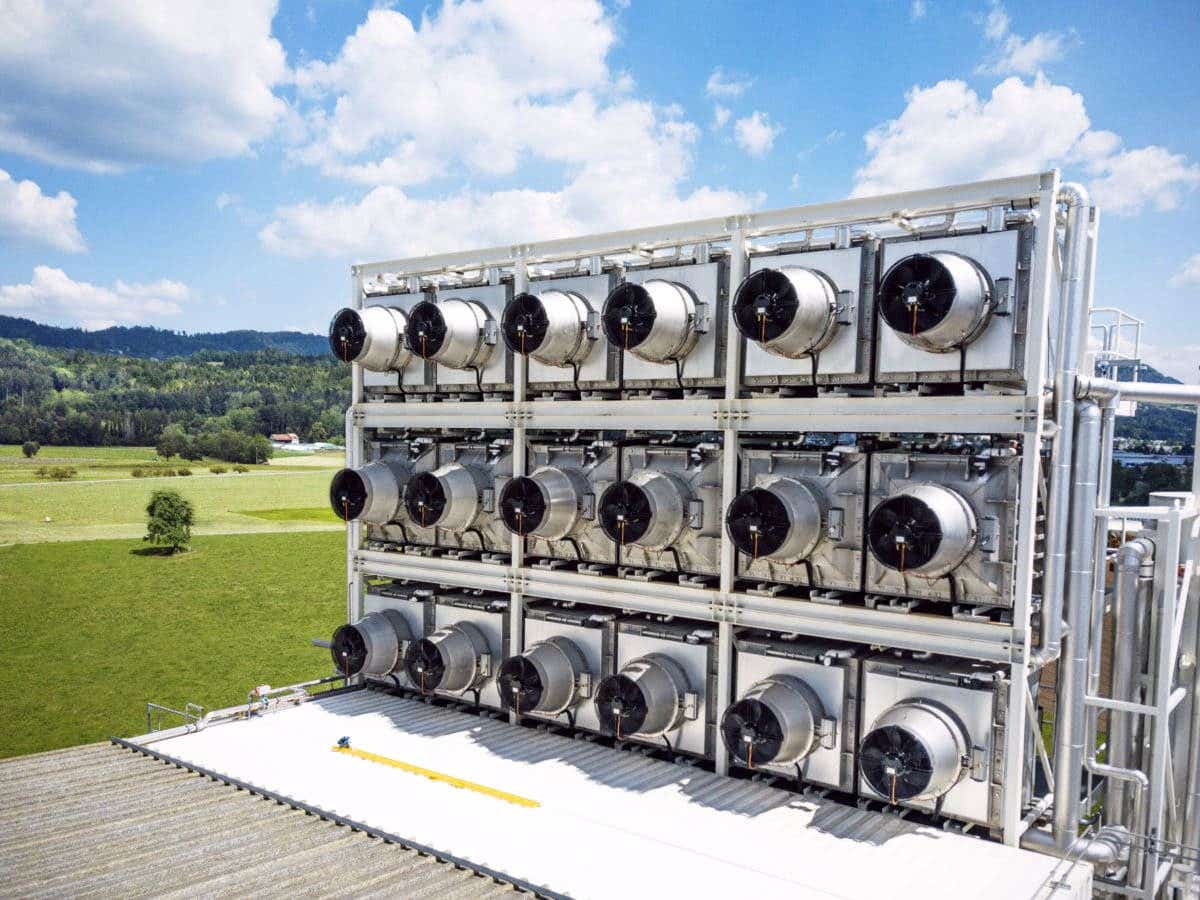The good and bad of effectively removing CO2 from the atmosphere
Researchers have now investigated how effectively DACCS could be implemented with different system configurations of a certain process.

[August 13, 2021: Paul Scherrer Institute]
Direct air carbon capture and storage (DACCS) is a comparatively new technology for removal of carbon dioxide from the atmosphere. Since it would allow large amounts of CO2 to be, in effect, trapped, this technology could also reduce the greenhouse effect. Researchers at the Paul Scherrer Institute PSI and ETH Zurich have now investigated how effectively this could be implemented with different system configurations of a certain process. To do this, they analysed a total of five different configurations for capturing CO2 from the air and their use at eight different locations around the world. One result: Depending on the combination of technology used and the specific location, CO2 can be removed from the air with an effectiveness of up to 97 percent.
To separate CO2 from the atmosphere, air is first passed over a so-called absorbent with the help of fans. This binds CO2 until its capacity to absorb the greenhouse gas is exhausted. Then, in the second, so-called desorption step, the CO2 is released from the absorbent again. Depending on the absorbent, this happens at comparatively high temperatures of up to 900 degrees Celsius or at rather low temperatures of about 100 degrees Celsius.
In addition to the energy required for the production and installation of the equipment, the operation of the fans and generation of the required heat produce greenhouse gas emissions. "The use of this technology only makes sense if these emissions are significantly lower than the amounts of CO2 it helps to store," says Tom Terlouw, who conducts research at PSI's Laboratory for Energy Systems Analysis and is first author of the study.
Efficiency of up to 97 percent
In their study, the researchers focused their examination on a system from the Swiss company Climeworks, which works with the low-temperature process. The PSI researchers analysed the use of the technology at eight locations worldwide: Chile, Greece, Jordan, Mexico, Spain, Iceland, Norway, and Switzerland. For each location, they calculated the overall greenhouse gas emissions over the entire life cycle of a plant. For example, they compared the efficiency of the process when the required electricity is provided by solar energy or comes from the existing electricity grid. As sources for the necessary thermal energy they assumed, for example, solar thermal plants, waste heat from industrial processes, or heat pumps.
For the study, they drew up five different system layouts for atmospheric CO2 capture for each of the eight sites. With respect to efficiency, the results show an enormous range, from 9 to 97 percent, in terms of actual greenhouse-gas removal through the use of DACCS.
No substitute for reducing emissions
"The technologies for CO2 capture are merely complementary to an overall decarbonisation strategy – that is, for the reduction of CO2 emissions – and cannot replace it," stresses Christian Bauer, a scientist at the Laboratory for Energy Systems Analysis and a co-author of the study. "However, they can be helpful in achieving the goals defined in the Paris Agreement on climate change, because certain emissions, for example from agriculture, cannot be avoided." Thus a net-zero emissions target can only be achieved with the help of suitable negative-emissions technologies.
For more green news stories check out our Green Impact section at The Brighter Side of News.
Like these kind of feel good stories? Get the Brighter Side of News' newsletter.
Tags: #Green_News, #Carbon_Capture, #Global_Warming, #Climate_Change, #The_Brighter_Side_of_News



